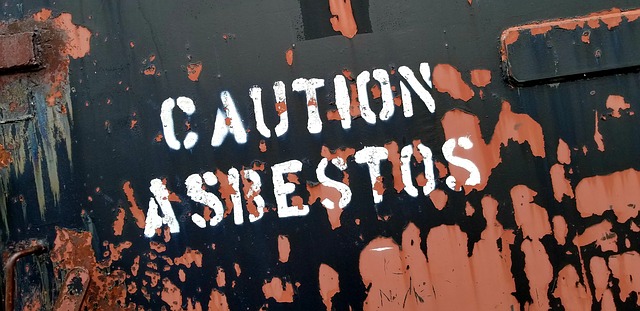What Makes Asbestos So Dangerous?

What makes asbestos so dangerous? Asbestos, a group of naturally occurring minerals, was once prized for its heat resistance and durability. It found its way into countless construction materials, from insulation to roofing tiles. But behind its seemingly harmless exterior lies a silent killer.
Understanding the dangers of asbestos exposure
Asbestos is a fibrous material that was widely used in the construction industry due to its fire-resistant properties. However, it was discovered that exposure to asbestos fibers can have devastating health effects. When these microscopic fibers are inhaled or ingested, they can become lodged in the lungs or other organs, causing a range of serious diseases.
Health risks associated with asbestos
Exposure to asbestos can lead to several life-threatening diseases. The most common of these are asbestosis, lung cancer, and mesothelioma. Asbestosis is a chronic lung condition that occurs when asbestos fibers scar the lung tissue, making it difficult to breathe. Lung cancer caused by asbestos exposure is often aggressive and difficult to treat. Mesothelioma, a rare and aggressive cancer that affects the lining of the lungs, abdomen, or heart, is almost exclusively caused by asbestos exposure.
Common sources of asbestos exposure
Here in Northern Ireland, asbestos can be found in various building materials, especially those used in older constructions. Some common sources of asbestos exposure include insulation materials, such as pipe and boiler insulation, ceiling tiles, roofing shingles, floor tiles, and cement products. As these materials age or become damaged, they can release asbestos fibers into the air, putting anyone in the vicinity at risk of exposure.
Asbestos-related diseases and their symptoms
The health effects of asbestos exposure may not become apparent until many years after the initial exposure. This latency period can range from 10 to 50 years, making it challenging to link symptoms to asbestos exposure. Asbestosis symptoms include shortness of breath, persistent coughing, chest pain, and finger clubbing. Lung cancer caused by asbestos may present symptoms such as persistent cough, chest pain, hoarseness, and weight loss. Symptoms of mesothelioma include chest pain, shortness of breath, coughing, and weight loss.
The importance of asbestos testing and removal
Given the serious health risks associated with asbestos, it is crucial to identify and remove any damaged asbestos-containing materials in buildings. Asbestos testing involves taking samples of suspected materials and sending them to a specialised laboratory for analysis. If asbestos is detected, proper removal procedures should be followed to ensure the safety of workers and occupants. Professional asbestos removal companies should be hired to handle the removal process, as they have the necessary training and equipment to safely remove and dispose of asbestos materials.
Legal regulations and guidelines for handling asbestos
In recognition of the dangers posed by asbestos, many countries have implemented regulations and guidelines for handling asbestos-containing materials. These regulations aim to ensure that asbestos is managed in a safe and responsible manner. They cover various aspects, including asbestos testing, removal procedures, worker protection, and proper disposal of asbestos waste. It is essential for construction companies, contractors, and building owners to familiarise themselves with these regulations to prevent asbestos-related health risks. Find out more here.
How to protect yourself and others from asbestos exposure
If you suspect that your home or workplace contains asbestos, it is crucial to take precautions to minimise the risk of exposure. Avoid disturbing materials that may contain asbestos, such as insulation or ceiling tiles. If you need to work with asbestos-containing materials, make sure to follow recommended safety procedures, such as wetting the materials to prevent the release of fibers and wearing appropriate protective clothing. Regularly inspect and maintain asbestos-containing materials to prevent deterioration and fiber release. Finally, seek professional help for asbestos testing and removal to ensure the safety of yourself and others.
Asbestos awareness and education initiatives
Raising awareness about the dangers of asbestos is vital to prevent further exposure and protect public health. Various organisations and government agencies such as the HSENI have launched asbestos awareness and education initiatives to provide information and resources to the public. These initiatives aim to educate individuals about the risks associated with asbestos exposure, the importance of proper handling and removal, and the available support for those affected by asbestos-related diseases. By spreading awareness, we can work towards a future free from asbestos-related illnesses.
Conclusion: The ongoing battle against asbestos
Asbestos continues to pose a significant threat to public health, despite being banned in many countries. Its hidden presence in countless buildings puts individuals at risk of developing life-threatening diseases. Understanding the dangers of asbestos exposure, recognising common sources of asbestos, and following proper testing and removal procedures are crucial steps in protecting ourselves and future generations. By adhering to legal regulations, raising awareness, and investing in education, we can continue the battle against asbestos and strive for a safer environment.
Our team of professional asbestos surveyors can help you get an asbestos register in place so that asbestos related issues are avoided.
